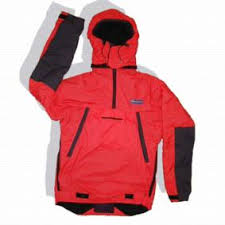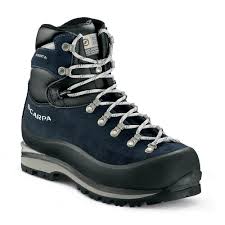 Uncategorized
Uncategorized
Clothing for Winter Mountain Walking
This is based on 25 years of wearing a wide variety of clothing for winter mountain walking. Clothing for the mountains is full of personal preferences that evolve with experience, so here’s my list of favourites so far:
Base Layer
Whilst I really appreciate the natural fibres of Merino wool, I have found that, by far, the best value, longest lasting and most consistently comfortable base layers on the market are the Patagonia Capilene range. Available in several thicknesses, I prefer the lightweight sweater and trousers for their excellent breathability and wicking properties. It really makes a difference having a light and dry layer next to the skin on long days where you are sweating in cold winter conditions. To explain just how good they are, I have had some for 20 years now. They still work just as well and they still don’t smell!
Socks
The Smartwool Extra Heavy Crew for mountaineering have lasted me for several seasons as well as being warm, comfortable, breathable and the best indoor slippers I have ever owned! I haven’t worn a better sock in winter. I started out wearing two pairs of socks until I learned the valuable knowledge that just one warm pair leaves more space for the blood in your feet to circulate and keep your toes warm. It really makes a difference and I have always worn just one pair ever since. Find thick, padded, comfortable, fast drying socks that give you room to wiggle your toes in your boots.
Warm & Waterproof Trousers
You can wear Paramo Aspira waterproof trousers or salopettes all day without overheating. The full length zips and side poppers enable you to benefit from the full range of ventilation options whilst you are on the move, keeping you dry, at a comfortable temperature and with a minimum of fuss. Combined with lightweight thermal trousers, they have enough insulation to keep you warm when you batten down the hatches in wild and windy weather. Free of the need to carry them in your pack, there’s more space to rummage around in so you can find things easily.

Warm Jacket
A Montane Extreme Smock has been the warm layer of choice for my upper body for over 15 years. They are very warm, totally windproof, shower proof, easy to ventilate and they last a long time. Their hoods are so good you don’t need a warm hat and they can close tightly around your face and neck in a storm. In all but warm winter conditions or fast leg burning ascents, you can wear the Extreme Smock all day, adjust the vents to stay comfortable and avoid the faff of removing and adding layers. The chest pocket is placed above your rucksack hip belt, you can fit a map in it and it works as ventilation too.
Waterproof Jacket
This tends to stay in my pack in all but the coldest, wettest or windiest conditions. Wanting something lightweight and easy to move in, I settle on the best value 3 layer Goretex jacket that I can find at the time. A good hood that can close over your head and face in a storm is essential and a wired hood enables you to adapt its shape to the wind direction. A big map pocket is really handy unless you like cutting your maps into smaller pieces. My current waterproof is a Mountain Equipment Ogre Jacket and it’s doing well. Ventilation zips are well worth the extra cost too, especially when walking up hill in wet conditions.
Hat
The hood of the Montane Extreme Smock is an excellent hat that remains attached to you and is, therefore, very unlikely to be lost. If you like to keep your head clear of a hood in less extreme weather, a lightweight hat can be a nice luxury item to carry in your pocket. A Buff is also a great bit of kit that can provide so much comfort to your head, face or neck for so little extra weight and bulk – these days I hardly ever go into the mountains without one. If I ever do need a hat, the Lowe Alpine Mountain Cap is probably the most functional winter mountain hat I know. Colourful beanies, Andean chullos and chunky knit tea cosies are also very nice!
Gloves
The Mountain Equipment Guide Glove is the best combination of warmth, dexterity and durability I have found yet. They are also a good fit for my hands and that is a very important and personal thing. You need a close fit to your hand size and shape if you are going to operate your compass, camera, zips and buckles effectively. You also need excellent windproof properties if your fingers are going to stay warm enough to work properly. As a very warm back up I also carry Dachstein mittens. Made from wool and boiled to shrink the fibres tightly together, they are incredibly warm, windproof and very durable.

Boots
This is such a personal thing. Aside from the need for warm and dry feet, a firm edge for hard snow and compatibility with crampons, your boots must be comfortable for long days in the mountains. Your foot needs room to move, bend and flex without sliding around inside your boot. Scarpa Mantas have been my boot of choice for nearly 20 years now. Whilst having some flexibility in the sole unit, they have plenty of stiffness for winter walking and wearing crampons. They even perform well on all but the most technical winter climbing situations I get myself into.
Gaiters
After buckles that come undone or cord that breaks on the strap that holds the gaiters in place under the boot, it’s worth paying extra for a strap that’s sewn at one end, has a solid buckle attachment at the other and is made of strong material. Front opening zips are great for ventilation in warm conditions and reinforced material on the inside of the calf protects the gaiter from crampons. I always wear waterproof trousers and salopettes outside the gaiters so that rain and moisture doesn’t run inside my boots. I find expensive Goretex to be unnecessary and something like the Mountain Equipment Trail Gaiter works really well.
I hope that my experience so far might help you in choosing your mountain walking clothing for winter time. If you’re reading this and wondering about your next purchase, do get in touch if you would like some advice. In my next article, I will outline my preferred equipment for winter mountain walking.
Enjoy your time in nature!
Paul